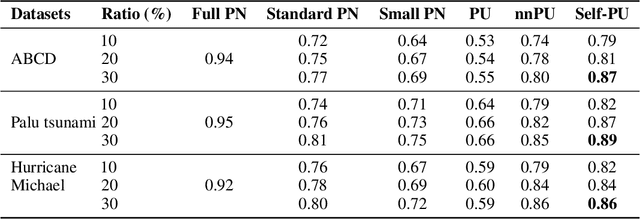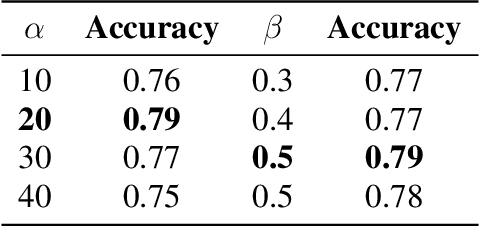Building Damage Mapping with Self-PositiveUnlabeled Learning
Paper and Code
Nov 04, 2021



Humanitarian organizations must have fast and reliable data to respond to disasters. Deep learning approaches are difficult to implement in real-world disasters because it might be challenging to collect ground truth data of the damage situation (training data) soon after the event. The implementation of recent self-paced positive-unlabeled learning (PU) is demonstrated in this work by successfully applying to building damage assessment with very limited labeled data and a large amount of unlabeled data. Self-PU learning is compared with the supervised baselines and traditional PU learning using different datasets collected from the 2011 Tohoku earthquake, the 2018 Palu tsunami, and the 2018 Hurricane Michael. By utilizing only a portion of labeled damaged samples, we show how models trained with self-PU techniques may achieve comparable performance as supervised learning.
 Add to Chrome
Add to Chrome Add to Firefox
Add to Firefox Add to Edge
Add to Edge